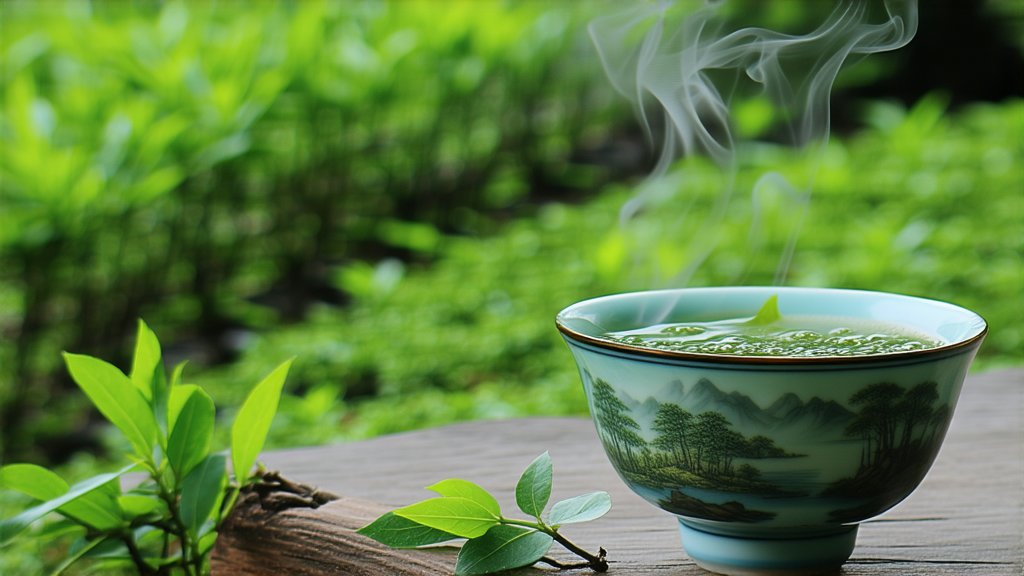
Longjing tea, also known as Dragon Well tea, is a variety of green tea that originates from Hangzhou, Zhejiang province in China. This exquisite tea has been celebrated for centuries for its unique flavor profile, delicate aroma, and numerous health benefits. In this article, we will delve into the rich history, varieties, intricate production process, and the art of appreciating Longjing tea.
History of Longjing Tea
The history of Longjing tea dates back to the Tang Dynasty (618-907 AD), but it gained widespread popularity during the Ming Dynasty (1368-1644 AD). It was during this period that the tea became closely associated with the West Lake region, which provided the ideal growing conditions for this high-quality green tea. The tea was initially named "Dragon Well" due to a well located near the tea gardens, which was believed to be the dwelling place of dragons—a symbol of prosperity and good fortune in Chinese culture.
Varieties of Longjing Tea
There are several grades of Longjing tea, each distinguished by its quality and appearance. The highest grade is called "Xihu Longjing," meaning "West Lake Dragon Well," which refers to the premium tea grown in the core area surrounding West Lake. This region's unique climate and soil contribute to the exceptional quality of the tea leaves. Other notable varieties include "Qiantang Longjing," "Yuhan Longjing," and "Dangyang Longjing," each with its distinct characteristics influenced by their respective terroirs.
The Art of Making Longjing Tea
The production of Longjing tea is an art form that requires skill, precision, and dedication. The process can be divided into several stages:
-
Hand-picking: Only the youngest and tenderest leaves are handpicked, usually during early spring when the first flush of growth appears. This ensures the highest quality and flavor concentration.
-
Withering: After picking, the leaves are spread out thinly on bamboo mats or trays to lose excess moisture and wilt slightly. This step helps to prepare the leaves for the next phase of processing.
-
Pan-frying: This is the most crucial step in Longjing tea production. The leaves are heated in a large wok or pan over high heat, causing them to release moisture and become soft and pliable. The expert tea master must constantly stir the leaves to prevent burning while ensuring even heating. This process not only halts oxidation but also gives the tea its distinctive flat shape and vibrant green color.
-
Shaping: Once the leaves have softened sufficiently, they are shaped by hand into their characteristic flat, needle-like appearance. This step further enhances the visual appeal and consistency of the final product.
-
Drying: Finally, the shaped leaves are dried at lower temperatures to remove any remaining moisture, stabilizing the tea for storage and longevity.
Appreciating Longjing Tea
To fully appreciate the nuances of Longjing tea, one must engage in a mindful tasting ritual known as "gongfu cha." Here's how you can savor this exquisite tea:
-
Warm the Teaware: Begin by rinsing your teapot and cups with hot water to warm them up and ensure an optimal brewing temperature.
-
Measure the Tea: Use approximately 3 grams of Longjing tea per 150 ml of water. Place the leaves gently into the teapot.
-
Infuse the Tea: Pour hot water (around 80°C) into the pot, covering the leaves completely. Allow the tea to steep for about 1-2 minutes for the initial infusion. Subsequent infusions can be extended by 30 seconds to a minute.
-
Observe the Leaves: As the tea unfurls, take note of its vibrant green hue and the dance of the leaves within the pot.
-
Smell the Aroma: Inhale deeply to experience the subtle fragrance of fresh grass, chestnuts, and a hint of floral notes that characterize Longjing tea.
-
Taste the Tea: Sip slowly, allowing the tea to roll over your palate. Notice its smooth, mellow texture and the sweet aftertaste that lingers on your tongue. The umami flavors and slight astringency are hallmarks of a well-crafted Longjing.
-
Repeat: Enjoy multiple infusions, each revealing new layers of complexity and depth in both flavor and aroma.
In conclusion, Longjing tea stands as a testament to China's rich tea heritage and the artistry involved in tea cultivation and production. Its history, diverse varieties, intricate manufacturing process, and the meditative act of tasting all contribute to its status as one of the world's finest green teas. Whether you're a seasoned tea connoisseur or a curious newcomer, Longjing tea offers an experience that transcends mere beverage consumption, inviting you into a world of sensory delight and cultural appreciation.